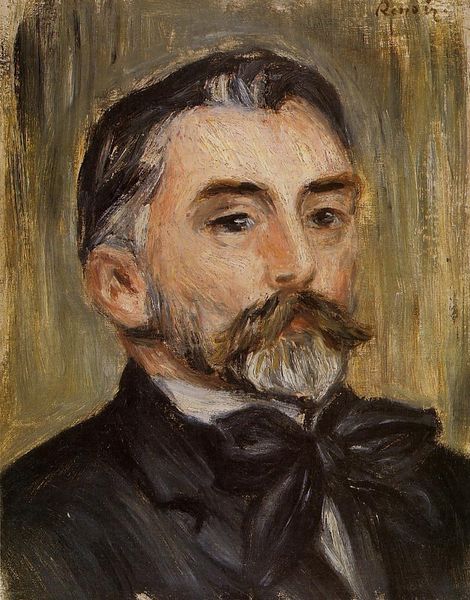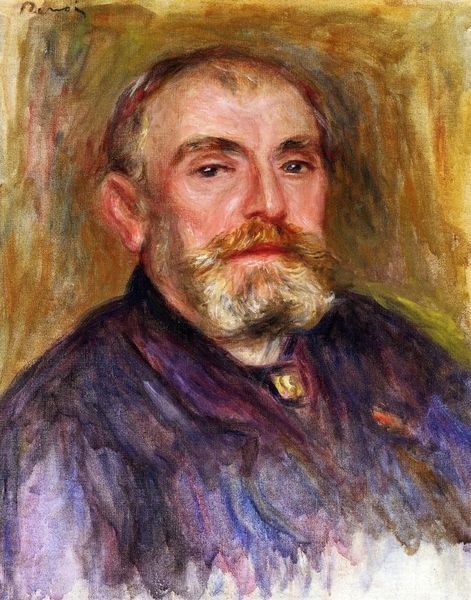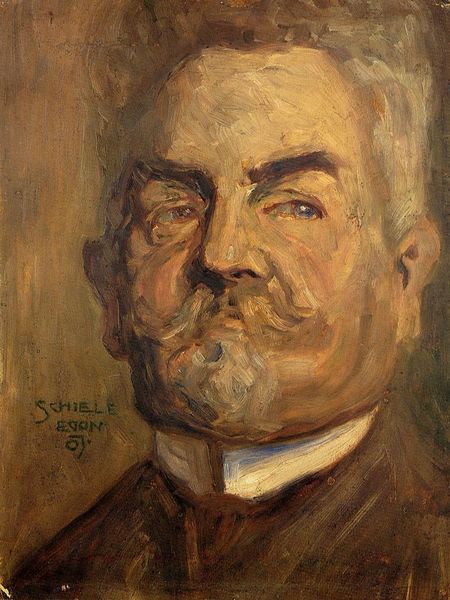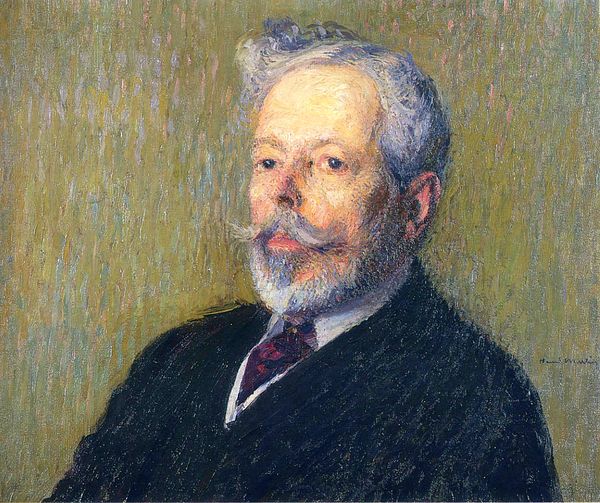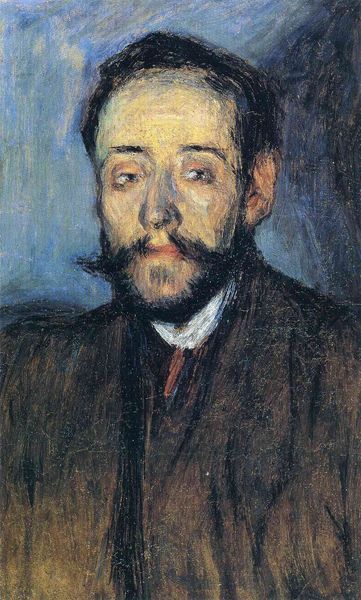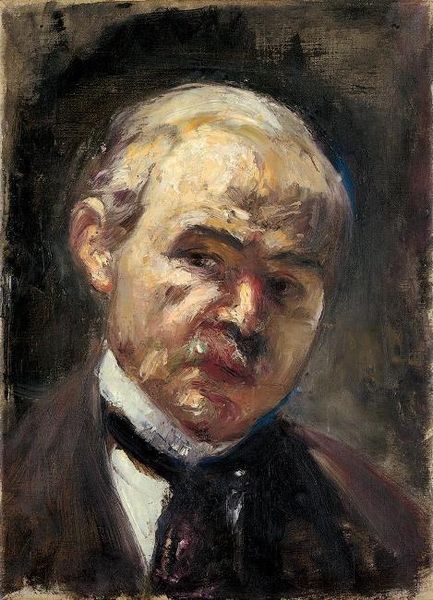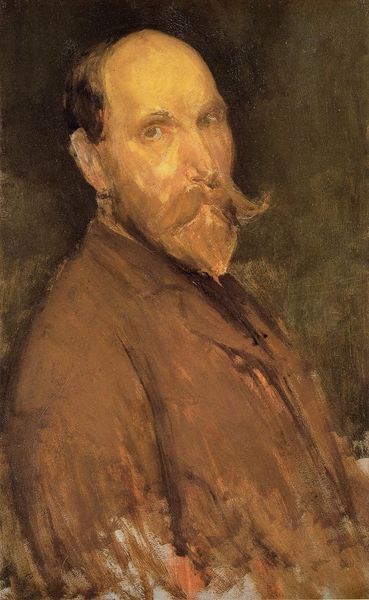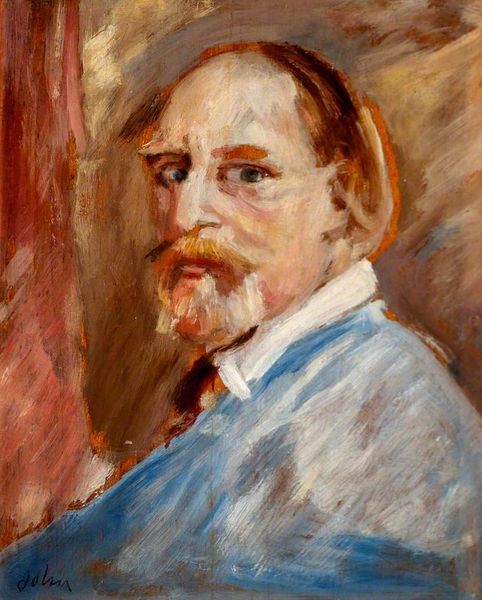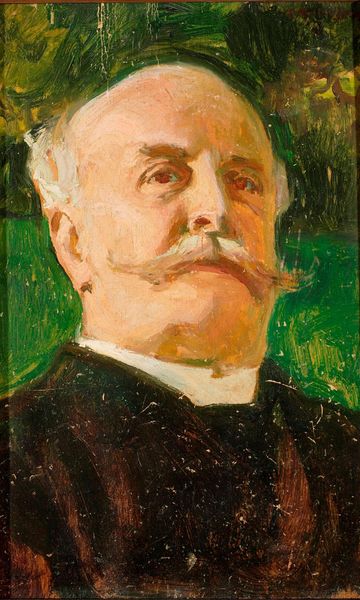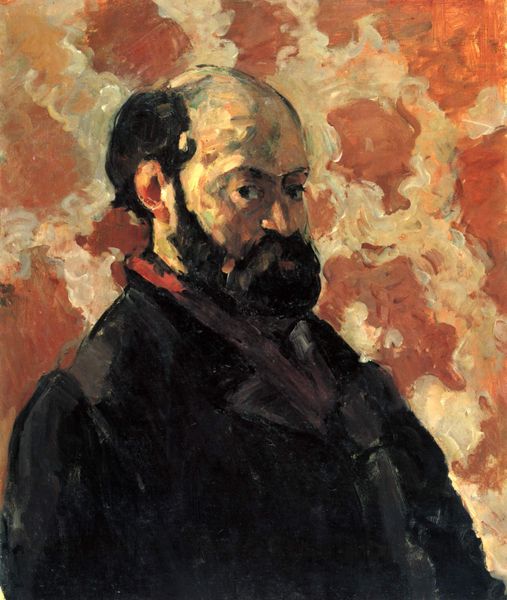
painting, oil-paint
#
portrait
#
painting
#
impressionism
#
oil-paint
#
oil painting
#
post-impressionism
#
realism
Copyright: Public domain
Curator: Paul Gauguin created this painting, Portrait of Philibert Favre, in 1885, while he was still experimenting with impressionism and realism. It’s currently held in a private collection. Editor: It has a wonderfully intimate quality to it; the brushstrokes are so close, and there's this soft blurring that brings warmth to the face. Curator: That's a really insightful way to put it. We have to remember Gauguin’s ambition at the time. Though still influenced by impressionism, you can already observe the direction towards post-impressionism in this image, a growing desire to express something beyond optical realism. Favre was a successful manufacturer—Gauguin was positioning himself within a certain social milieu to advance his career. Editor: I'm immediately drawn to the composition of the brushstrokes themselves. See how Gauguin uses the strokes almost sculpturally to render light and shadow on the face? Curator: Absolutely, and it marks an interesting intersection for the artist. While commissioned portraits were a way to achieve some financial stability and acceptance from the elite, he uses those same constraints to evolve towards his symbolist tendencies. Editor: Indeed. Looking closely, there’s something unfinished about the piece; it could be that blurring that doesn’t render a defined or overly academic likeness. The textural materiality achieved in that choice has such palpable presence, as if it's rising to meet me. Curator: Gauguin understood his audience while pushing stylistic boundaries, subtly incorporating some painterly expression. That balancing act ensured his acceptance into exhibitions. These portraits had a crucial public function at the time. Editor: It's interesting to consider the political positioning manifested within his portraits. You make a compelling case for a tension between realism and the movement beyond, with a distinctive quality pushing through. Curator: Well, I’d suggest anyone looking at this image to contemplate the conditions under which art emerges. Understanding the interplay between artistic experimentation and social conditions really enriched my appreciation of it. Editor: I would hope viewers allow themselves to dive deep into their initial emotional response as well. There is much to be said for pure subjective reaction, and this is precisely where a personal understanding of a work truly begins.
Comments
No comments
Be the first to comment and join the conversation on the ultimate creative platform.
